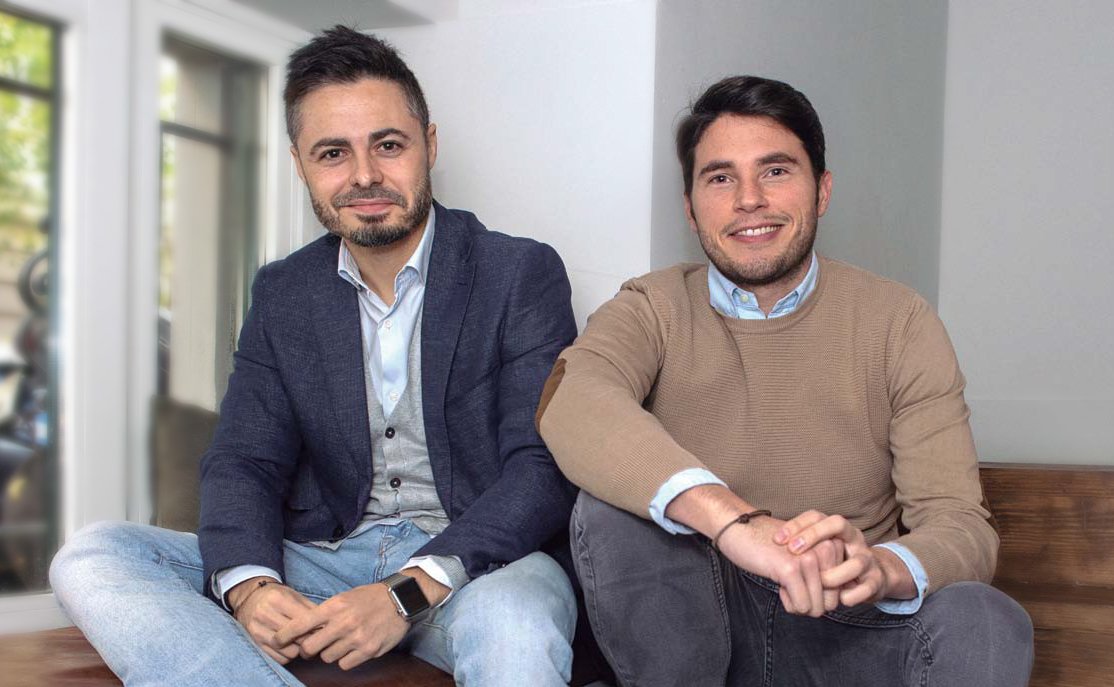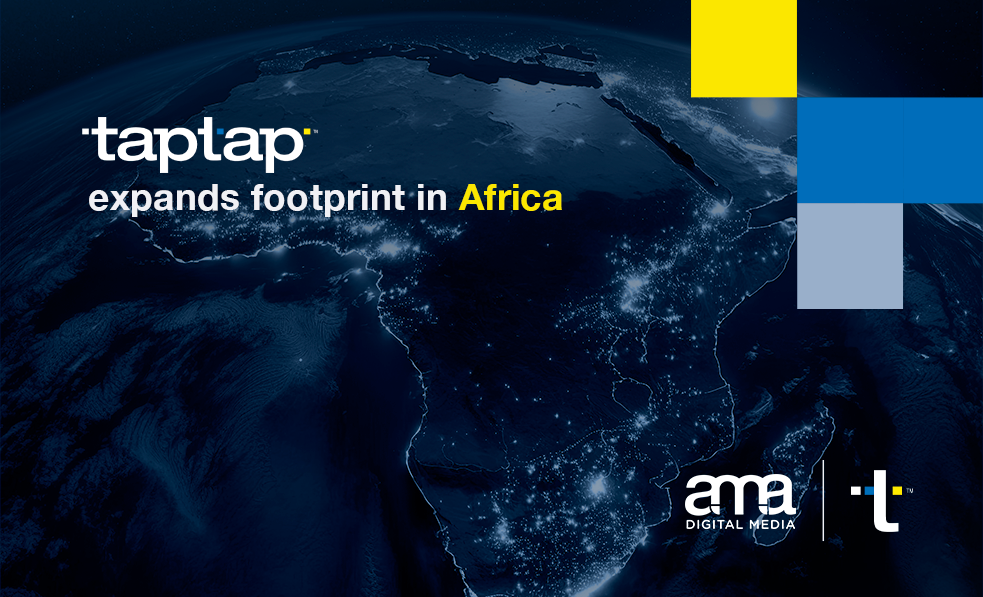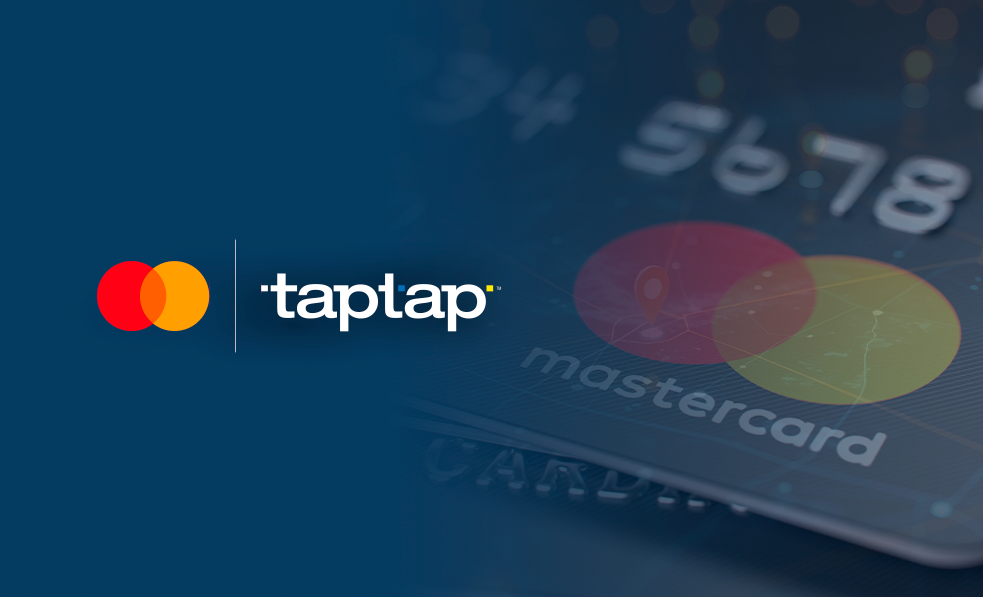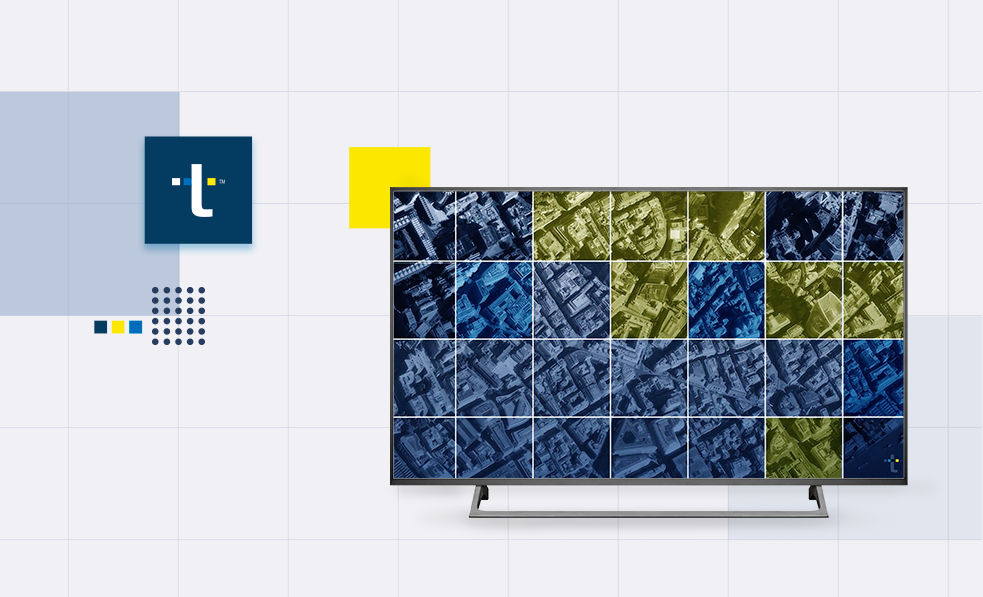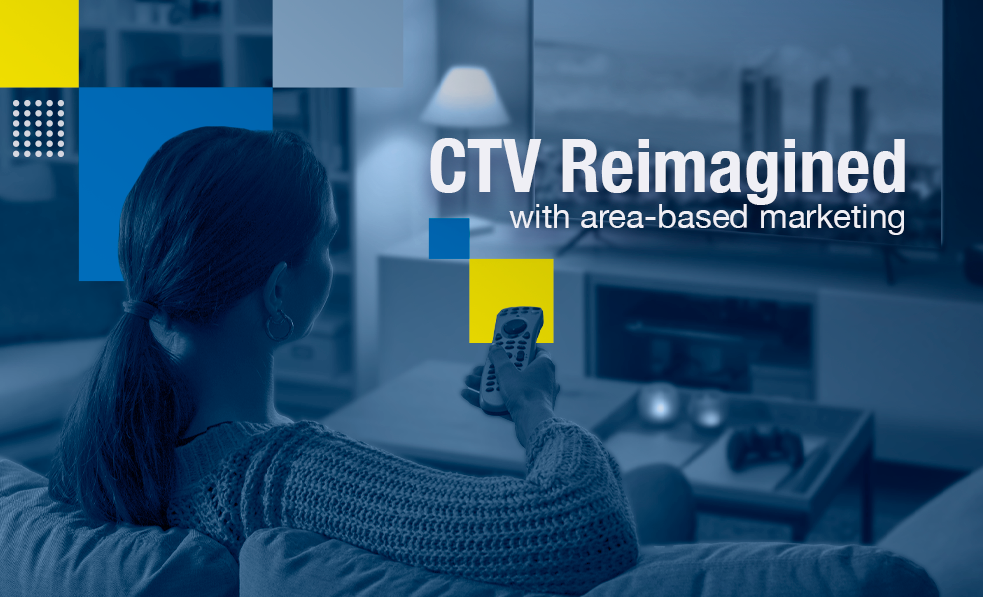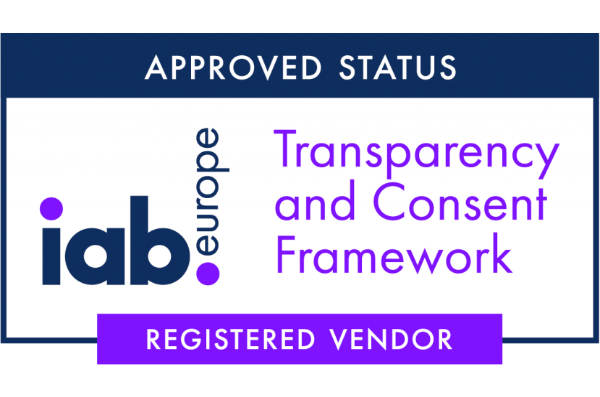Álvaro Mayol and Javier Velázquez, Partner & Chief Product Officer and Sales Strategy Director, respectively, of TAPTAP
TAPTAP was born in 2010, heir of a media buying market. But the Spanish company evolved quickly, says Álvaro Mayol, CPO of the company, and Javier Velázquez, Sales Strategy Director, towards what is today the key: the value of the audiences. To do this, and with the help of the Nauta Capital venture capital fund’s injection, Sonata developed its own technology and platform, on which they propose avant-garde solutions based on data intelligence and with which they’ve opened subsidiaries in 8 markets in the Americas and Europe. Sonata has made Taptap independent, with its own and scalable product, providing solutions of high differential value.
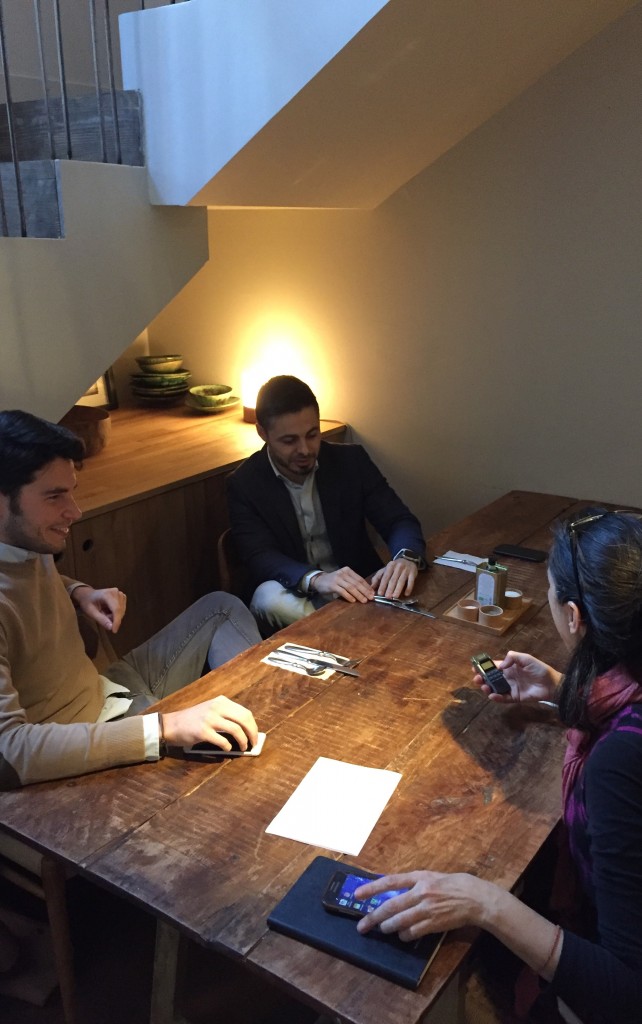
How can TAPTAP be defined, and what advertising solutions does it provide?
Álvaro Mayol - TAPTAP was born in 2010 at a time when mobile applications were beginning to boom, but the boom hadn’t arrived. For example, large publishing groups still didn’t have mobile applications, while mobile devices were growing. There was, then, a convergence of several things, and the opportunity arose to create a network with the focus on developing applications and being able to activate them publicly. We were born very close to the offer (now we’re on the demand side) so our interests focused on content, format, on taking users to these places. In 2012, after the capital injection from Nauta, we began developing our own technology, our DSP/DMP, with two focuses: move from media purchase to the audience (get closer to the user) and be able to use location as a differential factor in order to impact users, build specialized audience profiles, analyze the best activation time based on the analysis of the purchase path or consumer journey, in the last two years, to build measurement systems focused on the point of sale: how many people end up going to the store (physical or digital), and what part of the investment comes from that?
Why did they decide to develop their own technology in this field, and what approach did they taking in doing it?
Javier Velázquez - Because the step we were taking was from being very dependent on the conventional media structure to being very independent, and for that we needed our own technology because it’s the ally that allows you to change from the more classic media approach to start working with a clearer focus towards the user, which is what makes it possible for you to change your business model, modulate and offer different solutions depending on what a brand is demanding from you. Having a technology that you can modulate based on a goal that’s no longer just advertising allows us to address those users in a manner that’s 100% controlled by us. Our own technology makes us the creators of those specific solutions. The secret of our technology is that it’s transparent enough so that we can put the solutions they need in the hands of the clients, they’re not standard solutions, but we create specific solutions based on our technology. Our goal is to modulate solutions so that each advertiser has control over it, which, to this day, is working more and more.
A.M. - Having our own technology, on one hand makes us free, allows us to innovate and bring innovation to where we believe it contributes the most value to the advertiser and build strategies. But technology also has to be scalable, it’s important that the same product serves an advertiser anywhere in the world. That's why we started our international expansion in 2014 so that, by providing layers of services, strategy and value, we take advantage of the product to respond to the customer's needs in each market. Scalability and durability over time, those must be the solutions. Now we’re focused on providing value and intelligence to the use of data, always taking into account the regulations and restrictions in force in each of the markets. Devices are becoming more intelligent and provide us with great information in this regard. If you depend on a technological giant, you can’t be so versatile because their evolutionary processes are slower and, in this sense, TAPTAP has become a company that sees opportunities and adds great strategic value to the advertising ecosystem.
What are the distinctive characteristics of Sonata, its programmatic solutions? Can you talk about the specifics of programmatic in relation to mobile advertising?
A.M. - Everything we build and develop has to serve Spain, but also a global level, especially for the rest of the countries where TAPTAP operates. This has made us able to build technological or product solutions that differentiate us from other large operators. Having our own product makes us more agile, entering into opportunities that we couldn’t have imagined, such as the external environment, which we’re transforming hand-in-hand with big operators and partners, and using the mobile phone to approach other media. The mobile phone goes with us at all times, and for us it’s a fundamental factor for knowledge and learning about the user. Two years ago, we started working with the external world in activation and it helped us build an omnichannel strategy with the mobile phone in the center, which extends not only to the exterior, but can also reach television, radio, etc. The main key of Sonata is that it’s designed to learn and take advantage of everything that differentiates mobile devices, a differential that puts us outside of the most classic digital ecosystem of programmatic platforms. The location part is fundamental in the process of brand purchasing, and it’s important to understand that the mobile user is more versatile at the time of being impacted. The mobile is with us and allows us to better know and activate because we can impact depending on the moment. But what matters in the end is that it’ll allow us to read, for the purpose of results, what the action brings to the client. There are only two purchase channels: physical and digital, and we cover both. When measuring, we can see what the user does in the physical channel and link it with digital, something that’s increasingly asked by customers. It’s in that union of channels where Sonata builds a measurement and activation approach and is clearly different. It’s not only about knowing and impacting the audience, but about taking this to an environment of results.
Sometimes it seems like the same will happen to programmatic as with the mobile: Every year it seems like that will be the year.
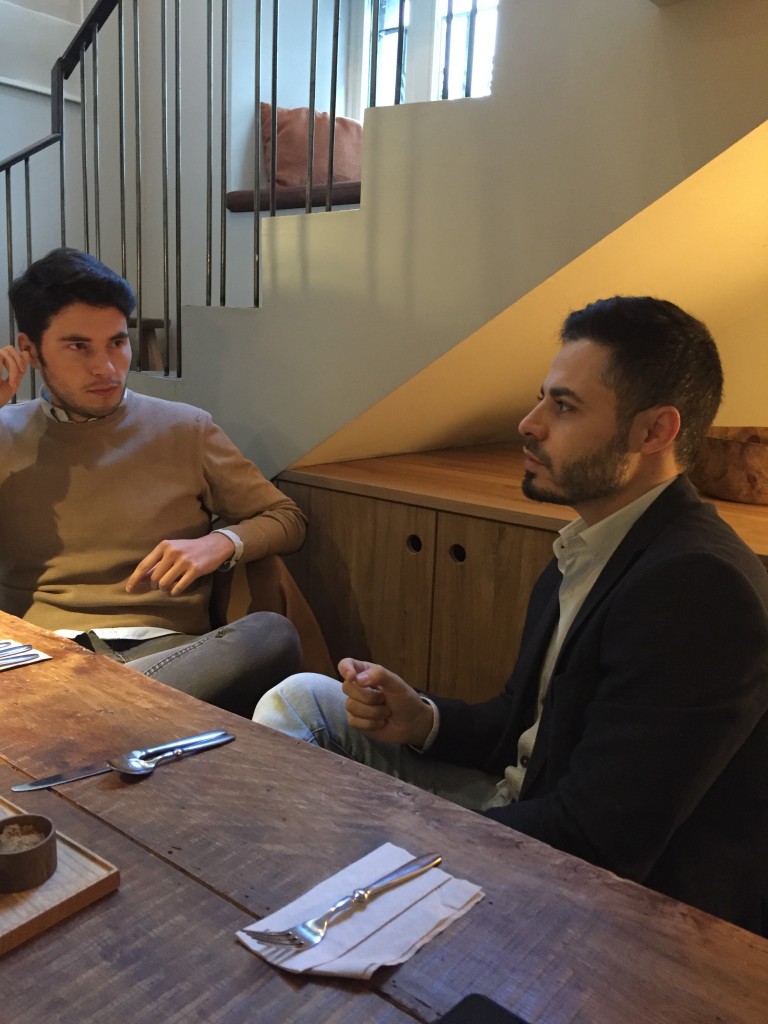
What obstacles are preventing you from moving faster?
A.M. – It’s true that the year of the mobile at the level of advertising investment hasn’t yet arrived, and in Spain perhaps it costs us a little more, although there are advertisers who have understood what it is to reach the user through this device and all the knowledge that it provides us for interaction with other media not as digital as the OHH, TV or Radio. We’re working with other media using the mobile as a vehicle for interaction with all media and audiences, because it allows us to communicate in different ways throughout the day, adapting the message to be more useful and relevant. For this reason, for us, the year of the mobile phone has already arrived because it means building omnichannel strategies that allow the user to be the center of the activation and communication strategy. Not in vain, the mobile is an extension of the user that allows us to analyze and understand, in a differential way, the consumer journey in a very specialized way.
J.V. - And programmatic happened a bit the same, because when it emerged, the focus was on media and not on audiences. The year of the mobile phone has arrived when we think of audiences, this being the most valuable device to reach them. But we have to stop thinking about channels. In this sense what’s arrived is the year of the audiences, which indeed we’re in today, and also in programmatic. It’s true that programmatic growth is still slow and that in Spain the penetration figures are around 30%. The explanation of this is that in Spain, programmatic was a different way of buying media, but these were still in the center, and when different ways have appeared, and that’s the key, to ensure measurements and activations, is when the audience becomes important and begins to be considered an element of value and cost. Before, the audiences were taken for granted or perceived as free because the media provided them. But now that the audience is beginning to be external, driven by others, is when it becomes important. Programmatic is a different way of activating those audiences and the media begins to take a back seat (we’re already seeing how the media is beginning to ride the audience wave). Programmatic will begin to grow as long as the audience is more valued than the media itself, because it provides that technological approach to contact the audience in another way. With this, in addition, the client already understands what programmatic is about, which isn’t another way to buy media, as was initially thought, believing that it would replace Excel and purchase orders. It’s not like that, but it puts value in certain layers that you didn’t have before and makes purchasing decisions more and more agile.
A.M. - The programmatic ecosystem has allowed us to change the focus, from the traditional purchase of media, to the purchase of audiences. In this way, we can add intelligence to the purchase and transform our digital strategies, including a data-driven approach along the entire funnel or consumer decision-making path. In fact, contrary to what was initially thought, which was a cheap way of buying (as well as opaque), we’re now seeing that programmatic can be more expensive and of greater value than direct purchase. The value of the data begins to be, in some cases, more relevant than the media itself. We must take into account a clear evolution: at one time, the media was the most important, and now it’s the conjunction of the media and the audience accompanied by mechanisms of guarantees and certification. This way, brands and advertisers can design more precise and targeted strategies for successful KPIs, and business strategies on an ecosystem of "people" linked to different devices.
All this happens, presumably, by certified and audited data... What’s your commitment in this regard?
A.M. - All our campaigns are audited by one or several external entities. For Sonata, the analysis and intelligence applied to fight against fraud and provide a greater guarantee in terms of quality of the media and data is key. A key variable of immense value, both in carrying out segmentation, activation and attribution of the audience at digital and offline levels, and to implement mobile-centric strategies, is the location. For this, Sonata has an audit and classification system for the location signals available in the advertising ecosystem called LQI (Location Quality Index). Thanks to Machine Learning and the analysis of billions of pieces of data on a global scale, Sonata’s expert system is able to discard all fraudulent or low-quality data, taking into account not only the user's location, but also dozens of additional variables, such as advertising interactions (clicks, videos...), viewability, ad placement, origin and quality of the media, etc. This whole data ecosystem allows us to know the moment the user is in, and generate a behavioral profile, both digitally and physically (offline).
In this sense, we’re offering a system that provides intelligence and data analysis, which offers internal quality and media guarantees, so we also work with suppliers certified by big organizations. Sonata allows profiling and getting to know the audience, the location being one of the differential factors in being able to activate and accompany the user in their decision-making process with the right message and, finally, being able to measure the repercussion of that activation and decision making at the point of sale. Therefore, for us it’s key to rely on a product with guarantees. If we don’t build attribution models that are certified, we can’t add value to that measurement for the investments of large advertisers.
J.V. - In fact, just guaranteeing that data can help achieve a greater return for the advertiser. And to guarantee that, it’s necessary to have third parties. Without forgetting a very important aspect: an advertisement that provides precision when focusing on audiences and measuring the impact in a very accurate way.
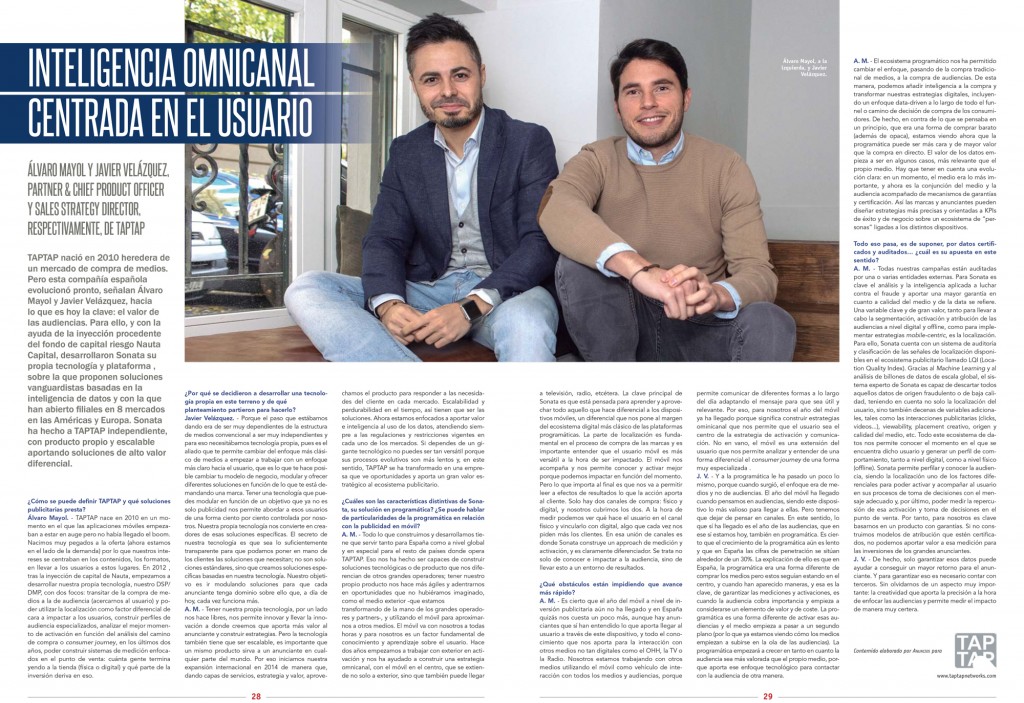
Source: Revista Anuncios



